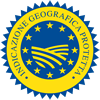Description
The Pesca di Verona PGI refers to the early-ripening, mid-season and late-ripening fresh fruit cultivars of the Bianca (white) and Gialla (yellow) peach varieties and the Nettarina Gialla (yellow nectarine) variety belonging to the species Persica vulgaris Mill.
Production Area
The production area of Pesca di Verona PGI is within several municipalities in the Province of Verona, in the Veneto region.
Production Method
The cultivation of Pesca di Verona PGI is carried out with traditional, organic or integrated methods. Only the “delayed Veronese vase” and “transverse Y” training methods are allowed. These are traditional methods in the Veronese area and ensure the right amount of sunlight and ventilation for all the foliage, which is important for obtaining the fruit’s final colour and flavour. All of the cultivation procedures are aimed at enhancing the product’s typical characteristics, and this why green pruning is recommended and manual thinning is mandatory. Another typical technique in the Veronese area, which is compulsory in fruit orchards, is controlled grassing, through which it is possible to monitor weeds while improving water balance and ground fertility at the same time. Harvesting takes place between June 10th and September 20th. Taking into consideration the delicacy of the fruit, harvesting takes place in three separate stages and must be carried out by hand. Refrigeration is used to store the fruit, with controlled humidity and temperature (between -0.5 and +0.5 °C) for a maximum of 20 days.
Appearance and Flavour
Pesca di Verona PGI has a minimum size of 61 mm for early-ripening cultivars and 67 mm for mid-season and late-ripening cultivars. The white and yellow pulp peach varieties have a round-oblate shape, whereas the yellow nectarine varieties have a round-elongated shape. The colour is vivid and bright, while the pulp is consistent and juicy, with a characteristic sweet flavour.
History
In Roman times, Pliny referred to the Verona peach as “Il pomo della lanuggine” (the apple with fuzz) in his works, evidencing the ancient origins of this fruit. Furthermore, a peach is the protagonist in a 15th century painting by Andrea Mantegna in the Basilica di San Zeno in Verona. Irrigated cultivation started to develop during the 18th century, and by the end of the following century production and the areas dedicated to these fruit orchards were already surprisingly widely spread. This is confirmed by the motto coined by the Arena di Verona newspaper on the occasion of the local peach market in 1934: alongside inviting images of the fruit itself, was the phrase “mangiate le squisite pesche di Verona” (eat the exquisite peaches from Verona)
Gastronomy
Pesca di Verona PGI can be kept either at room temperature, in a cool, dry place, or in the refrigerator when fully ripe. Its refreshing and thirst-quenching properties make it a perfect summer fruit. It is also ideal for making cakes, desserts, ice-creams and jams, and can be preserved in water and sugar to obtain peaches in syrup.
Marketing
The product is marketed as Pesca di Verona PGI, in the following varieties: Polpa Bianca (white pulp), Polpa Gialla (yellow pulp) and Nettarina a Polpa Gialla (yellow nectarine), in the commercial categories Extra and First. It is available from June to September, and sold in trays sealed with plastic film, baskets weighing 1 or 2 kg, or cardboard, wooden or plastic plateau boxes of varying sizes.
Distinctive Features
Pesca di Verona PGI owes its unique and unmistakable properties, which can also be found in its rich colour and well-balanced, sweet and sour taste, to the pedoclimatic characteristics of the production area, the producers’ professional skills, and the centuries-old experience of Veronese fruit growers.


























